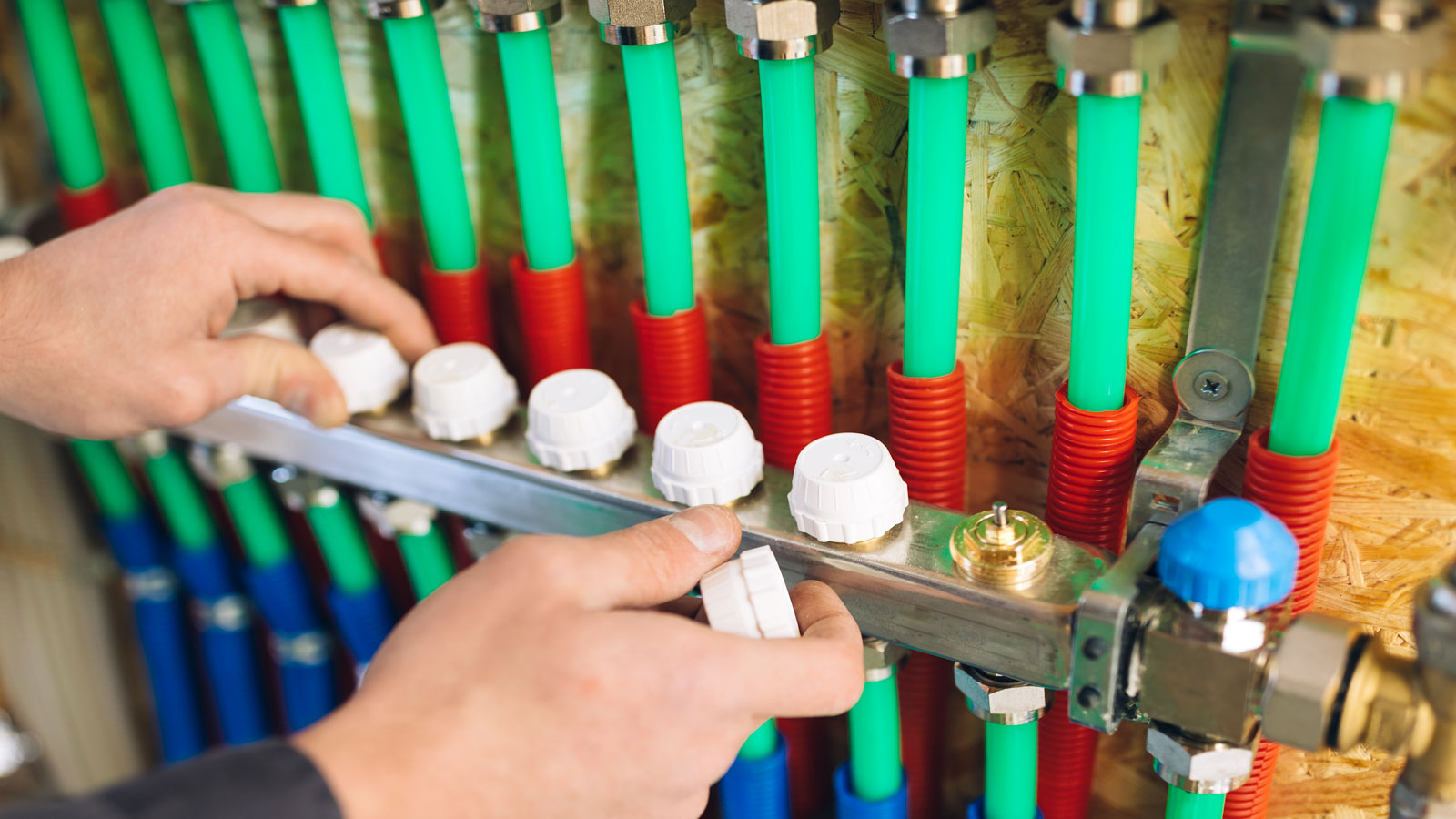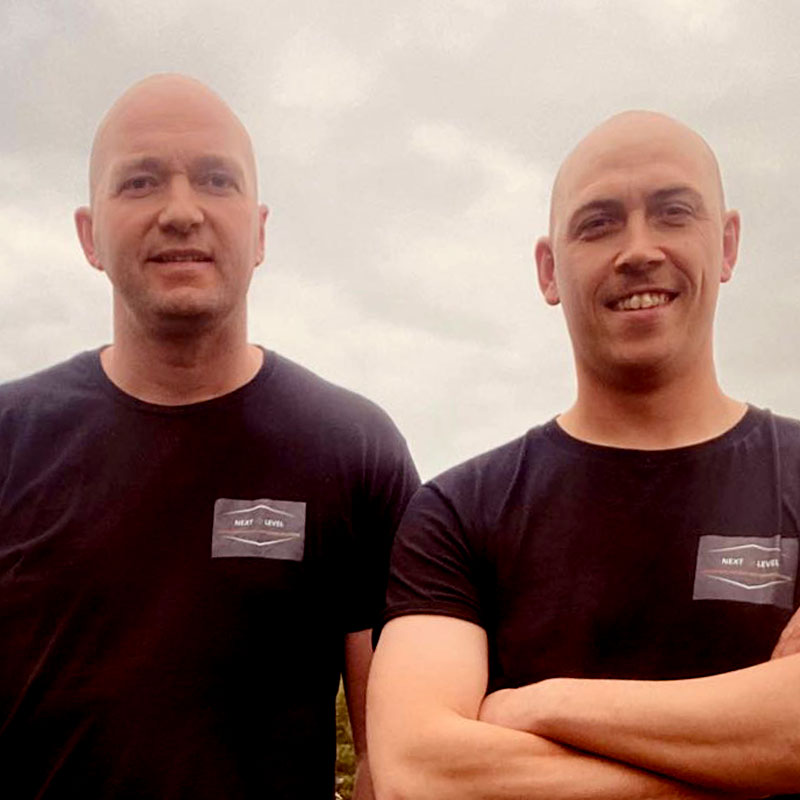How to bleed underfloor heating to keep it running efficiently
Knowing how to bleed underfloor heating is a simple skill that you need to know to keep your home warm. Here we tell you what you need to know

If your home has underfloor heating then you’ll need to know how to bleed it. Like all heating systems they need regular maintenance to operate efficiently. And bleeding a heating system is one way to help make sure it stays warm when you need it most.
Here we take a closer look at how to deal with what is known as wet underfloor heating. This is where hot water is pumped through pipes under the floor. If air gets trapped in these pipes your underfloor heating costs could go up. So you need to know how to fix it when it happens. Here the pros run through the process and the steps you need to take.

Working in the industry for over 15 years Gordon and Alan's mission is to help property owners get warmer and more comfortable with underfloor heating and proper floor screed.
How to bleed underfloor heating: Why to do it
Like more traditional heating systems in the home, UFH (Underfloor Heating) will need maintenance to keep it in good working order. If you don’t have UFH in your home but want it check out our how to install underfloor heating guide.
Bleeding is one of the solutions to ensure your heating stays in good working order. Gordon Chalk and Alan Houghton, MDs at Next Level Underfloor Heating and Screed Solutions tell us why. “Underfloor heating systems need bleeding because air can get into the pipework over time. This is more common in wet underfloor heating systems, which pump water through pipes in your floors to warm them up.”
So what does air trapped in underfloor heating do? “Air can prevent your underfloor heating from working efficiently because it stops the water from circulating properly through the pipework.” This can be identified by, “Areas of your floor that aren't warming up.” Chalk adds, “This will increase your energy bills and reduce the effectiveness of your underfloor heating.”
Chalk and Houghton reveal a few other tell-tale signs that your underfloor heating needs bleeding:
- Gurgling or bubbling: These sounds are a sign of air in the pipework.
- It takes longer to heat up: If your system is taking longer to heat up than usual, it could be down to air restricting the water flow.
They say, “We recommend bleeding your underfloor heating system as part of your routine maintenance. It's much easier to do this than to put up with a poorly functioning system.”
Steps to bleed underfloor heating
Chalk and Houghton say that, “Bleeding underfloor heating is a relatively simple process, but it's important to follow our steps carefully.” And, it’s worth noting the following, “The process varies slightly depending on your system, but we'll focus on wet underfloor heating systems.”
1. Turn your heating off
The first step is to, “Make sure your underfloor heating system is switched off and has cooled down.” Why? “This is important because you don't want hot water pumping through the system while you're bleeding it.”
2. Find your manifold
So what is the manifold (if you don’t know), “Your manifold is the centralised control unit for your underfloor heating system.” What does it do? “It distributes the water to each circuit in your home.” Where do you find it? “You'll usually find it in a utility room, airing cupboard or similar.”
3. Open the bleed valves
Unlike a standard central heating system, UFH uses manifolds, “Most manifolds have bleed valves for each loop or zone. These allow you to release air from the system.” So how do you do this? “Start with the first zone, slowly open the bleed valve. You'll probably hear a hissing sound as air escapes from the pipework. When water starts flowing freely from the valve, you can close it.”
One tip is to have a bucket and towels ready to collect and mop up any stray water.
4. Repeat for each zone
UFH is typically split into zones so you will need to concentrate on each, “If you've got multiple rooms or areas, you'll need to bleed each loop. Work your way around your home, bleeding one zone at a time.”
5. Re-pressurise your system
Releasing air from a system will typically lead to a loss of pressure. “After bleeding, you'll probably need to re-pressurise your system. Check the pressure gauge on your manifold or boiler (it should be between 1 and 1.5 bar). If it's too low, you'll need to top it up by adding water to the system.” Check the manufacturer manual on how to do this for your system.
6. Turn your heating back on
After you have bleed each loop or zone in your home and made sure that the system is back up to the correct pressure, “Turn your heating back on.” Now your UFH, “Should now be warming your home evenly.” Go around each zone and manually check all parts of the area to ensure that it is heating up as expected.
FAQs
Can you bleed electric underfloor heating?
Bleeding underfloor heating only applies to what are known as wet underfloor heating systems. Why? Chalk and Houghton explain, “Electric underfloor heating systems don't have water or air in the pipework, so you don't need to bleed them.”
But this doesn’t mean that electric underfloor heating doesn’t encounter the same issues as Chalk and Houghton share, “If you've got an electric underfloor heating system and some areas aren't warming up, it's likely down to a problem with the electrical wiring or the heating mat itself. We'd recommend getting a professional to take a look.”
If you already have underfloor heating installed then you need to look after it. But if you are thinking about having it installed then you need to check out our Underfloor heating with tiles: Does it work and what are the problems?, Underfloor heating with combi boilers: Pros, cons and your questions answered and Underfloor heating with laminate floors: Is it a good idea? to help you decide if it's for you or not.
Get the Homebuilding & Renovating Newsletter
Bring your dream home to life with expert advice, how to guides and design inspiration. Sign up for our newsletter and get two free tickets to a Homebuilding & Renovating Show near you.
Steve Jenkins is a freelance content creator with over two decades of experience working in digital and print and was previously the DIY content editor for Homebuilding & Renovating.
He is a keen DIYer with over 20 years of experience in transforming and renovating the many homes he has lived in. He specialises in painting and decorating, but has a wide range of skills gleaned from working in the building trade for around 10 years and spending time at night school learning how to plaster and plumb.
He has fitted kitchens, tiled bathrooms and kitchens, laid many floors, built partition walls, plastered walls, plumbed in bathrooms, worked on loft conversions and much more. And when he's not sure how to tackle a DIY project he has a wide network of friends – including plumbers, gas engineers, tilers, carpenters, painters and decorators, electricians and builders – in the trade to call upon.

